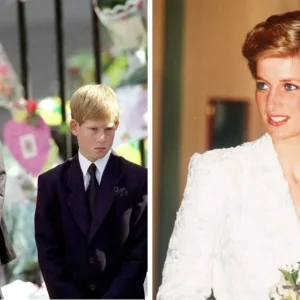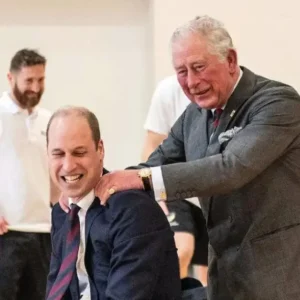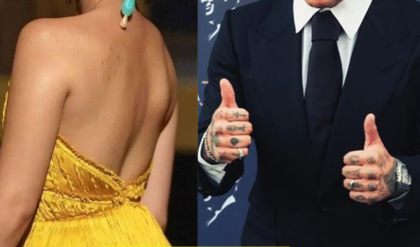The 2024 NHL free agency signing period is officially underway.
As the deals continue to roll in, ESPN NHL reporters Kristen Shilton, Greg Wyshynski and Ryan Clark will be grading the big-name signings, including the player’s fit with his new team, terms of the deal and more.
We’ll continue to grade the most notable moves through the offseason, so check back for fresh grades as deals are consummated; the newest grades will be listed first. Contract terms are per year.
More: Player rankings
Team guides
Draft recap: Team grades
Winners, losers

July 1

Jeff Skinner, LW
The terms: One year, $3 million
Grade: B+
Where does he fit?
Edmonton is giving Jeff Skinner a chance to prove himself after the Buffalo Sabres bought out the remainder of his previous deal. If all goes well, Skinner will be a top-six fixture for the Oilers’ offense. The 32-year-old winger produced 24 goals and 46 points in 74 games last season for an underperforming Sabres squad, but Skinner is just one year removed from an 82-point campaign that showcased how much of a difference-maker he can still be.
Skinner is a pure scoring threat who’s excellent off the rush, and his ability to finish can compensate for some glaring defensive deficiencies that, let’s face it, probably won’t improve much at this stage of his career. Edmonton knows that. The Sabres likely wanted (and needed) more out of Skinner’s all-around game given where they’re at in the retooling process and Skinner’s former salary ($9 million per year).
Now, Skinner should simply be expected to help ignite the Oilers’ attack on 5-on-5 and on the power play. He’s well-suited to that role.
Does it make sense?
This has the potential to be a win-win for both team and player. Skinner hasn’t experienced a single playoff game in his 14-year, 1,006-game career. Now there’s a decent chance he could be competing for a Stanley Cup with Edmonton this upcoming season.
The Oilers’ run to the Final last season was fueled, in part, by the depth of their offensive talent, and Skinner will have a chance to make his mark there. He’ll be shuffled around as needed throughout Edmonton’s lineup, and if Skinner can take advantage of the skaters around him (Connor McDavid? Leon Draisaitl? Zach Hyman?) it’s a good bet he can have a meaningful impact on the Oilers.
And for Edmonton, this is a low-cost signing of a good player who can benefit from a fresh start. Skinner is in show-me mode, and that’s the sort of chip-on-the-shoulder energy Edmonton’s entire group will be carrying after falling just shy of a Cup victory. Skinner should feel right at home. — Shilton

Brady Skjei, D
Nashville Predators
The terms: Seven years, $49 million
Grade: B
Where does he fit?
Nashville needed to retool its blue line after sending veteran Ryan McDonagh back to Tampa Bay in May. Skjei is McDonagh’s heir apparent on the Predators’ blue line, and just produced a career-best season with the Carolina Hurricanes, punching in 13 goals and 47 points in 80 games while bearing a heavy workload at over 21 minutes per night. Like McDonagh before him, Skjei is a jack-of-all-trades for Predators’ coach Andrew Brunette to unleash in every situation — including both the power play and the penalty kill. In theory, Skjei should be able to lead a strong second pairing and potentially fill a slot with Roman Josi on Nashville’s top pairing, too.
Does it make sense?
The Predators weren’t playing around to open free agency. It was Steven Stamkos. It was Jonathan Marchessault. And it was Skjei. Nashville aspires to be better in every facet and Skjei is going to provide serious punch from the blue line and help take some pressure off Josi. When the Predators are pushing to be in a win-now mode, it’s worth the price (in money and term) to invest in Skjei for the bulk of his remaining career. Given his age (30), the latter years of this deal might look bad, but if Nashville earns its coveted postseason success in the process that’ll be a cost of doing business. — Shilton

Chandler Stephenson, C
Seattle Kraken
The terms: Seven years, $43.75 million
Grade: C
Where does he fit?
In the middle, where the Kraken have young standouts (Matty Beniers, Shane Wright) and dependable veterans (Yanni Gourde, occasionally Jared McCann). He’s a solid offensive player, but not one who brings a lot of defense or physicality. The key for Stephenson is who plays on his wing, as he’s not really a play-driver on his own. That’s where you find the strength of the Kraken in McCann, Jordan Eberle, Jaden Schwartz and others. As in Vegas, Stephenson is going to be only as good as what surrounds him.
Does it make sense?
Logistically, it makes sense if the Kraken are walking away from Gourde after next season. Stephenson can slide into that role behind the two young centers, in theory. But the issue here is that Stephenson might not be worth this investment. Last season was a dud for him, with his lowest points per 60 minutes output in the past four seasons and terrible defensive metrics. While he saw time with usual linemate Mark Stone, he didn’t play much with Jack Eichel, who had helped boost his numbers in the previous two seasons. It seems like the Kraken are getting Stephenson on the way down, and getting him for the next seven years of that. — Wyshynski

Sean Monahan, C
Columbus Blue Jackets
The terms: Five years, $27.5 million
Grade: B-
Where does he fit?
EDITOR’S PICKS

NHL free agency tracker: Details on new deals for Stamkos,Skinner, Montour, more

NHL draft grades: Why the Sharks, Utah Hockey Club each get an A+

2024 NHL offseason trade tracker: Latest deals, grades, buzz
In the small world of the NHL, reunions happen all the time. Here’s an unexpected one, potentially: Monahan skating with Johnny Gaudreau again, years after they played their last game together with the Calgary Flames. Gaudreau hasn’t lived up to his contract but also hasn’t been a disaster for the Jackets, with 134 points in 161 games. Monahan adds a solid center to the Jackets’ depth chart, which skews a bit young.
Does it make sense?
It does in the short term, but maybe not for the duration of the contract. Monahan gives the Jackets the solid veteran pivot that they needed. He had 26 goals and 33 assists between Montreal and Winnipeg last season. He can play the bumper on the power play. But he was a nonfactor in the playoffs for Winnipeg. While he’s not known for his defense, he’s not a liability either. But the Jackets have a lot of rising stars in the middle: Adam Fantilli, Cole Sillinger and Kent Johnson among them. How much will they need Monahan, 29, by the end of this deal? — Wyshynski

Matt Roy, D
Washington Capitals
The terms: Six years, $34.5 million
Grade: A-
Where does he fit?
Washington is giving its blue line a makeover and Roy should be a significant factor in getting the Capitals back to contender status. The 29-year-old produced the best seasons of his career in Los Angeles from 2022 to ’24 as a second-pairing stalwart. A defensive defensemen, Roy has impressive details to his game that have been highly underrated. He should be an excellent addition to the Capitals top-four rotation with an expanded game that has included more offensive output — he hit a personal-best nine goals last season. He will be a fine addition to both Washington’s power play and its penalty kill. Basically, there’s not much Roy can’t offer and with all the turnover the Capitals have had on defense in recent years, they will benefit from the stability he will provide.
Does it make sense?
The Roy signing is superb all around. It’s a great value for a player who could be a genuine difference-maker. The term is longer than GM Brian MacLellan probably wanted — Roy will be in his mid-30s when the contract expires — but the cap hit at $5.75 million per season is excellent for what he is going to provide in the short term. Washington also nabbed Jakob Chychrun in a trade with Ottawa on Monday to show how committed the Capitals are to revamping their blue line. If Chychrun is the wild card then consider Roy a sure bet. He’ll be relied upon as a top contributor who appears to be entering the peak of his career. And Washington will be reaping that reward. — Shilton

Tyler Bertuzzi, LW
Chicago Blackhawks
The terms: Four years, $22 million
Grade: B+
Where does he fit?
Right now, the answer might be on what appears to be a newly constructed top line. Signing Bertuzzi along with the return of 2012 first-round draft pick Teuvo Teravainen means the Blackhawks have even more options that can surround Connor Bedard. Even if they’re not playing with Bedard, they’re options and that’s the whole point. Bertuzzi is a four-time 20-goal scorer who could see those numbers elevate for a Blackhawks team that just became a bit more intriguing than it was 24 hours earlier.
Does it make sense?
In the short term, this move adds more scoring help. In the long term, this is the sort of move that could help the Blackhawks with the next phase of their evolution. They used free agency last year to add veterans such as Taylor Hall and Nick Foligno to mentor a young roster. This offseason saw them sign two players who could have strengthened several rosters, including teams trying to win the Stanley Cup. That’s not to say the Blackhawks are indeed going to challenge for a playoff spot. But they look much stronger than a team that finished with a bottom-three record. — Clark

Jake DeBrusk, LW
Vancouver Canucks
The terms: Seven years, $38.5 million
Grade: B+
Where does he fit
Some of that depends on how the Canucks use J.T. Miller and Elias Pettersson. Losing Elias Lindholm in free agency created a need for a top-six center. While Miller and Pettersson are centers, they’ve also played on the wing. If they’re both used as centers, then it creates an opening for DeBrusk to serve as a top-six winger who could give the Canucks a three-time 20-goal scorer who finished with 19 for the Bruins in 2023-24. Then there’s the fact the Canucks are getting someone who has gradually emerged into a reliable penalty killer, having gone from 48 short-handed minutes in 2021-22 to logging 129 minutes.
Does it make sense?
On the surface, signing DeBrusk provides the Canucks with options. They’ve added a 20-goal-scoring winger who could potentially score more in addition to the fact that he could be another body they use on the penalty kill. Even though the Canucks lost Lindholm, the fact they signed a versatile two-way player such as DeBrusk reinforces the notion that they’re serious about trying to challenge in the Western Conference for another year — and for the long haul. — Clark

Tyler Toffoli, LW
San Jose Sharks
The terms: Four years, $24 million
Grade: A
Where does he fit?
Next to either of the team’s young centers next season. The Sharks just selected Macklin Celebrini out of Boston University with the first overall pick in the 2024 NHL draft. He has yet to commit to the NHL next season, but it’s expected that he will. They have Boston College star center Will Smith already signed for next season. Toffoli is a productive winger who has played top six minutes wherever he’s gone and can be a boon to a power play.
Does it make sense?
Absolutely. The Sharks have a long road ahead in their rebuild despite the young talent on the roster. Toffoli is going to give their young centers someone to play with who brings NHL experience and dependable offense. He can also be a help to wingers such as William Eklund on the depth chart, and a mentor. For Toffoli, it’s a welcome return to the West Coast for a player who had his first eight seasons with the Los Angeles Kings, winning the Stanley Cup there in 2014. The term is the win here, as the Sharks didn’t have to make it too lengthy to lure Toffoli to a team that’s well outside the playoff picture. The $6 million AAV doesn’t matter. The Sharks have plenty of cap space now and for the next few seasons. — Wyshynski

Jonathan Marchessault, RW
Nashville Predators
The terms: Five years, $27.5 million
Grade: B
Where does he fit?
Consider Marchessault in the same vein as Steven Stamkos (that other veteran forward the Predators signed Monday) — he’s a 33-year-old skater who just happens to be playing some of the best hockey of his career. Marchessault put up 42 goals last season for Vegas and has been a consistent contributor to the Golden Knights attack throughout his 30s. That’s the same type of role Nashville will slide Marchessault into, using him as a first- and second-line scorer. If Marchessault’s defensive game can match what he’s still capable of offensively, he should be a key part of the Predators’ attack. It’s clear Nashville wants to load up on players with experience who can take on a number of roles — from even strength to special teams — and Marchessault provides that same versatility Nashville was eyeing with Stamkos.
Does it make sense?
Truthfully, this deal might not age well (hence why the Predators get only a B here). Five years is a lot for a mid-30s skater (even one who has been productive recently) and the Predators could regret going long term here. But at the same time, Nashville is trying to win now. It has a solid young core of players and GM Barry Trotz has filled in the gaps with strong veteran leaders. Marchessault comes with championship pedigree from Vegas. From Ryan O’Reilly to Stamkos and now Marchessault, that’s invaluable experience for Trotz to be padding his locker room with. If the first two to three seasons with Marchessault can be on par with what he accomplished in 2023-24, though, and if he makes an impact for Nashville at the most important time of year, then investing a little more up front might not end up looking so bad for the Predators. — Shilton

Elias Lindholm, C
Boston Bruins
The terms: Seven years, $54.25 million
Grade: B+
Where does he fit?
Several narratives existed around the Bruins in 2023-24, with one of them being they needed a center to play on their top two lines. They saw Charlie Coyle emerge with a strong season, but still faced questions about whether it would all work after they were eliminated in the second round by the Panthers. In Lindholm, now they get a proven top-six center with two-way ability who fits within the Bruins’ identity of what they want to be in both zones.
Does it make sense?
It can, but some of that also depends on how Lindholm performs in the offensive zone. His 46 points between the Calgary Flames and Vancouver Canucks last season was a decline from the 82 he had in 2021-22 and 64 during 2022-23. That said, he still went on to have the best postseason campaign of his career, with five goals and 10 points in 13 games, as the Canucks came within a win of advancing to the Western Conference final. — Clark

Nikita Zadorov, D
Boston Bruins
The terms: Six years, $30 million
Grade: B+
Where does he fit?
The Bruins needed another proven top-four defenseman to complete what they already had with Charlie McAvoy, Hampus Lindholm and Brandon Carlo. Signing Zadorov gives them that fourth, top-four option. Any team in need of a physically imposing defenseman who can kill penalties while adding more than 20 points per season was going to look at Zadorov. It also means that the Bruins will have continuity going forward with Lindholm, McAvoy and Zadorov all under contract for six years, while Carlo has three years remaining on his current deal.
Does it make sense?
Zadorov fills a need, but this deal comes with the question of what version of Zadorov will the Bruins get? There’s no denying Zadorov is a legitimate top-four option. But if he can be the version that helped the Canucks come within a game of the Western Conference finals, that’s going to make the Bruins an even harder team to play against because they’ll have a 6-foot-5 marauding defenseman who delivers hits, scores goals, kills penalties and can be trusted in key minutes to close out important games. — Clark

Steven Stamkos, C
Nashville Predators
The terms: Four years, $32 million
Grade: B+
Where does he fit?
For the first time in his professional career, Stamkos will be donning a sweater that’s not Tampa Bay blue and white. It’s an intriguing prospect. Nashville is a desirable landing spot for veterans such as Stamkos who have the versatility and experience to play up and down the lineup. Ryan O’Reilly’s renaissance with the Predators last season is proof enough of that. Stamkos may be 34, but he’s coming off a 40-goal season and put up 42 goals in 2021-22 as well. He’ll target a top-six role for Nashville and can be used at center or on the wing depending on how coach Andrew Brunette wants to spread out the talent. Stamkos should be able to log decent minutes and be an asset on the power play, too.
Does it make sense?
Tampa Bay was spying bigger fish when it grabbed signing rights to Jake Guentzel. There was no way the Lightning were going to offer Stamkos what Nashville just did. The Predators clearly believed they had to make a significant investment in Stamkos. The organization has had a frustrating run the past couple of years, toggling between excellent regular-season stretches and short playoff stints. Stamkos is bringing an impressive amount of postseason credibility (with a pair of Stanley Cup rings to his credit) and a decade of leadership experience as Tampa Bay’s captain. Nashville needed another O’Reilly-type figure who has won it all and seen it all and can help the team reach its ultimate goal. Stamkos is in the latter half of his career but there’s still plenty he can offer on and off the ice from here. — Shilton

Jake Guentzel, LW
Tampa Bay Lightning
The terms: Seven years, $63 million
Grade: A
Where does he fit?
On the top line with Brayden Point and Nikita Kucherov, where Guentzel could easily surpass his career highs in goals (40) and points (84) next season. Guentzel was expected to be the most coveted winger on the free agent market, which is why the Lightning got aggressive and acquired his negotiating rights from the Carolina Hurricanes. He’s a play-driving scorer in both the regular season and the playoffs, and far from a defensive liability. He also has extensive experience thriving with high-end talent, as we saw in Pittsburgh during his time with Sidney Crosby.
Does it make sense?
Unless something changes, there’s no getting around the notion that the Lightning adding Guentzel meant the Lightning subtracting Steven Stamkos. Guentzel is four years younger, a bit better defensively and a shade less explosive offensively. But he’s not the captain of the Lightning. He’s not the guy who spent 16 seasons with this group, winning two Stanley Cups. Guentzel said he’s ready for the pressure of replacing Stamkos, assuming he doesn’t return to Tampa Bay. “I mean, look, he’s a Hall of Famer. He’s a special player. I have the utmost respect for the guy,” Guentzel said. “It’s part of the business. You’re never sure what’s going to happen. In hockey, there’s always going to be pressure, no matter where you play.” This makes sense because now the Lightning can be better for longer. Kucherov is 31. Point is 28. Guentzel is 29. This theoretically extends their contention window beyond Stamkos’ shelf life and with a player who can put up commensurate numbers. The $9 million cap hit is steep within the Lightning cap ecosystem, but it’s another no state income tax dandy, as Guentzel easily makes over $11 million AAV elsewhere. — Wyshynski

Brett Pesce, D
New Jersey Devils
The terms: Six years, $33 million
Grade: A-
Where does he fit?
Goal prevention was an issue for the Devils throughout last season. It’s one of the main items that prevented them from returning to the playoffs. They needed another veteran option with proven results in the defensive zone, which is what prompted them to sign Pesce. He gives them a 6-foot-3 right-handed shooter who can serve in a top pairing or top-four role for the team while being a key figure on the penalty kill.
Does it make sense?
This is another one of those signings where a team had a need and found a player who checks several boxes. So much about the Devils offseason was going to be centered on how they improved a defensive identity that was lacking. It started by trading for Jacob Markstrom. Adding Pesce to a unit that has young talents such as Luke Hughes and Simon Nemec, and reuniting him with Dougie Hamilton, who is recovering from a torn left pectoral muscle, provides another dimension. And it still leaves the Devils with enough space to add more throughout the day. — Clark

Brandon Montour, D
Seattle Kraken
The terms: Seven years, $50 million
Grade: A
Where does he fit?
In short? He might be as close to a perfect fit as a team can have in free agency. Consistent goal scoring was an issue for the Kraken last season. That’s what makes Montour a strong fit who is a bit of a surprising one, as well. Montour was going to provide any team a top-pairing puck-mover who has averaged more than 23 minutes per game over the past two seasons. His 16 goals and 73 points in 2022-23 elevated his status, while the 11 points in 24 games he amassed during the 2023-24 Stanley Cup playoffs were instrumental in the Panthers winning it all. The fact that he can produce as a right-handed-shot defenseman helps address the Kraken’s offensive challenges.
Does he make sense?
Yes, and there are a few reasons. Montour gives them that top-pairing defenseman who could jump-start a power play that finished 20th with a 78.8% success rate. Perhaps the biggest reason it makes sense? The Kraken needed to be aggressive this offseason. After they made the playoffs in Year 2, they missed it in Year 3. That has led to questions about the direction of the franchise. Signing Montour with the reality they still have $16.2 million in available cap space only adds to the belief that the Kraken could have more in store Monday. — Clark

Sam Reinhart, RW
Florida Panthers
The terms: Eight years, $69 million
Grade: A
Where does he fit?
The better question is, where doesn’t Reinhart fit in for Florida?
The Panthers’ top priority in the offseason was to get Reinhart signed long term, and there are reasons for that — not only because he scored the game-winning goal to propel Florida to its first Stanley Cup. He’s coming off a career-best 57-goal regular season, was a masterful part of the Panthers’ power play (collecting 34 points there), scored five shorthanded goals as part of Florida’s penalty kill and was a top-six anchor averaging over 20 minutes per game.
Reinhart can play at center or on the wing, which adds to his value and versatility. And at just 28 years old, this should be only the beginning of his prime years — most of which will be played in sunny south Florida.
Does it make sense?
Reinhart could have explored the free agent market and found there were higher bidders waiting for him there. Certainly, he’d earned the chance to find out. But Florida has been good for Reinhart and supported his growth as a player; he has thrived since being traded to the Panthers from the Buffalo Sabres in 2021, and that’s not something any skater takes for granted.
Reinhart undoubtedly left money on the table knowing Florida could use the funds to add more players around him (and the Panthers’ other stars) to keep the good times rolling and offer an opportunity to compete for the Cup a third (and fourth, or fifth) consecutive season from here.
This is a slam dunk deal for both parties, with security for Reinhart on his future, and a little breathing room for GM Bill Zito to get other deals done over the summer. — Shilton

Chris Tanev, D
Toronto Maple Leafs
The terms: Six years, $27 million
Grade: B-
Where does he fit?
As he showed throughout the postseason for the Dallas Stars, who traded for him at the deadline, Tanev remains one of the better shutdown defensive defensemen in the NHL. He’s a rugged, win-at-all-costs player who manages to defend well while staying out of the penalty box.
One could easily see him fitting next to Morgan Rielly, allowing the Leafs’ talented puck-mover to concentrate on offense while he manages the back end. He’s an upgrade over TJ Brodie, who filled this role last season.
Does it make sense?
When you’re a general manager, you go with what you know. Brad Treliving gave Tanev four years and $18 million in October 2020 as general manager of the Calgary Flames, with a partial no-movement clause. Now he has given him six years at the same AAV and a full no-movement clause to come to Toronto.
Given Tanev’s age and the miles on his body — he has played some hard minutes in his career — I think he is more like the guy you trade for at the deadline for six weeks of service than the guy you sign for six seasons with full-movement protection. But this is the reality of the NHL’s economics right now: Toronto is competing against the no-state-income-tax teams down south. This is the kind of contract structure that teams such as the Leafs have to make to land a free agent like Tanev, given the advantages of other markets.
The chances of him playing all six years of this deal are rather remote — they’ll have enough plausible deniability to LTIR his brittle body by Year 5. In the short term, they get an accomplished defensive defenseman who improves their back end and inches them closer to championship contention — as long as his body holds up, which is no guarantee. — Wyshynski
News
MEGHAN MARKLE’S LATEST EFFORT UNDER FIRE: IS IT JUST SELF-PROMOTION?
Meghan Markle’s newest venture is facing criticism long before production has even begun! “The problem is I sometimes think Meghan can’t let go and wants it to be about her…” royal expert Rupert Bell dished on the “Kinsey Schofield Unfiltered” podcast. SOURCE:…
‘GOOD KING HARRY’: PRINCESS DIANA FELT THAT FUTURE ROYAL TELL-ALL SCRIBE WOULD MAKE ‘A BETTER’ MONARCH THAN PRINCE WILLIAM
Diana, Princess of Wales, once nicknamed her youngest son “Good King Harry,” due to his “general gusto” compared to the real future monarch and his elder brother, Prince William. “William doesn’t want to be king and I worry about that,” royal author Angela Levin wrote in…
FORGING HER OWN PATH: LADY LOUISE WINDSOR TO AVOID ‘ROYAL BURDEN’ AS SHE FOCUSES ON UNIVERSITY LIFE
Lady Louise Windsor, 20, and 16th in line to the British throne has decided to create her own path in life after previously contemplating a life of service to the Crown. “I think it’s probably too early to tell,” GBN’s royal correspondent Cameron…
“Royal Restructure Stumbles: Princess Anne’s Injury Puts Strain on Slimmed-Down Monarchy”
Prince William has reportedly taken King Charles III’s “slimmed-down monarchy” initiative to the extreme. But as the next king readies to slim down the Crown even more than his dad, a “severe warning” has been issued by some royal analysts when it comes…
FORTUNE FAVORS THE BOLD: KING CHARLES TO UNLEASH MONEY-MAKING STREAM AT ROYAL LODGE ONCE HE KICKS PRINCE ANDREW OUT
King Charles III is reportedly set to start a rental money-making stream once he finally boots his younger brother, Prince Andrew, from the Royal Lodge near Windsor Castle. “Rental of £1million a year is not far-fetched for a house of that size…
Jemele Hill Unleashes Furious Rant Claiming Caitlin Clark Receives Different Treatment From Media Compared To Black Players
Jemele and Caitlin Clark (Photo by Leon Bennett/Getty Images) (Photo by Andy Lyons/Getty Images) Jemele Hill has a serious issue with Caitlin Clark, but it’s not from something she did or said, but from the media who covers her. Caitlin Clark, the…
End of content
No more pages to load











